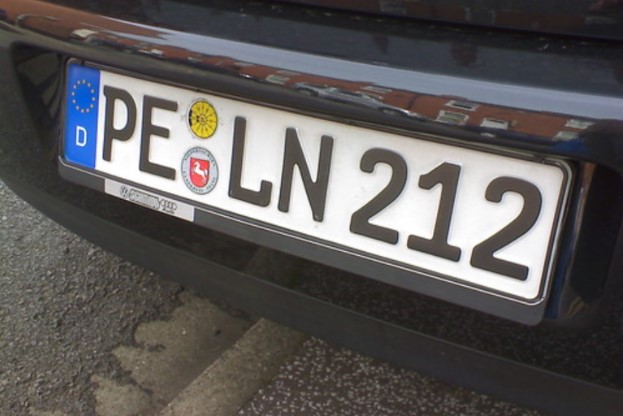If you’ve ever owned or driven a car in the UK, you’ll know that those little rectangles bolted to the front and back of your vehicle aren’t just decorative. They carry a surprising amount of history, regulation, and even a bit of national character. Number plates, or registration plates if you want to be technical, are more than a jumble of letters and numbers – they’re part of what makes a car legally roadworthy. But how much do you really know about what makes them “legal” in Britain? Let’s walk through the essentials, the quirks, and a few things that might just surprise you.
Why Number Plates Matter in the UK
For most drivers, number plates are just there, taken for granted. Yet they serve a crucial function: identifying vehicles on public roads. They help the DVLA keep track of who owns what, aid the police in spotting stolen cars, and even play a role in London’s congestion and ULEZ charging schemes. Without them, the roads would be chaos, and enforcement near impossible.
But there’s more to it than slapping a few digits on a shiny background. A number plate has to meet strict design and material standards set out by the government. If yours doesn’t, you could land a hefty fine, risk failing your MOT, or in extreme cases, have your car taken off the road.
The Anatomy of a Legal Plate
So, what exactly makes a number plate legal? In the UK, every plate must meet a uniform set of criteria:
- Font and size: Characters must be in the standard “Charles Wright” typeface, 79mm tall and 50mm wide, with no creative flourishes or fancy spacing.
- Colour scheme: Front plates must have a white background with black characters, while rear plates must be yellow with black characters. No room for personal artistic flair here.
- Spacing: Letters and numbers must be spaced correctly. Even nudging them closer to mimic a word can get you into trouble.
- Material: They need to be made from reflective material, but not the sort that blinds other drivers.
- Supplier mark: Every legal plate carries the name of the supplying garage or retailer, plus their postcode.
It sounds dry, but these details ensure consistency across the country and help keep enforcement straightforward. Deviate too far, and you risk a £100 fine on the spot.
Personalised Plates: Where Individuality Meets Regulation
The British love for individuality finds a curious outlet in personalised plates. From cheeky abbreviations to outright vanity displays, they’ve become a booming industry. DVLA auctions rake in millions each year, and some plates fetch six-figure sums.
Still, even the flashiest personalised plate has to follow the same legal rules. That means no italic fonts, no creative gaps to spell your nickname, and definitely no coloured screws to sneakily change a character. What you can buy is essentially the “right” to that unique sequence – but the plate itself still has to be made legally.
Show Plates vs Road Plates
If you’ve wandered around a car meet, you might have noticed glitzy plates in unusual fonts or colours. These are what enthusiasts call “show plates.” They’re fine for display at exhibitions or in private spaces, but they’re a definite no-go on public roads. Driving with one is essentially asking for trouble – think fines, penalty points, and insurance headaches.
The important distinction is simple: if you’re on the road, your plate must be legal. If it’s just for show in your garage or a photo shoot, go wild.
How to Tell If Your Plates Are Legal
It’s easy enough to check. Stand a couple of metres away and ask yourself: does it look like every other plate you see on the road? If it doesn’t – if the letters are squished, the spacing is odd, or the background colour is off – you might want to get it replaced. MOT testers are especially picky, and an illegal plate can mean a straight fail.
Another quick tip: check the bottom edge of the plate. You should see the supplier’s details and the British Standard mark (currently BS AU 145e). If that’s missing, there’s a good chance it isn’t road legal.
Finding a Trusted Supplier
Not all shops selling plates are equal. Some churn out show plates without warning customers they’re not legal, while others are fully registered with the DVLA. The safest bet is to look for a registered number plate maker who asks you for proof of ID and your vehicle’s V5 logbook before producing your plates. It might feel like a hassle, but that’s actually a sign they’re doing things properly.
Shops that don’t ask for documents should ring alarm bells. They might give you plates quickly, but you’ll be the one paying fines later.
When Plates Change: New Cars and New Formats
Every March and September, the DVLA rolls out new plate formats linked to vehicle age identifiers. For example, cars registered in March 2025 will carry “25” in the middle of the plate, while those registered in September 2025 will carry “75.” This rolling system helps buyers quickly gauge the age of a car – a handy trick in the used market.
It also means plates aren’t just random. There’s an organised system:
- The first two letters identify the region where the car was registered.
- The numbers reveal the age.
- The last three letters are random to make each plate unique.
So, if you spot a “LC25 XYZ,” you know it was registered in London in the first half of 2025.
Plates and the Law: What Happens If You Break the Rules?
It’s tempting to push the boundaries – maybe squeeze the spacing to spell your initials or pop a cheeky sticker over the side. But the law doesn’t see the humour. If you’re caught, the fine is usually £100. Refuse to fix it, and you could end up in court facing a penalty of up to £1,000 and losing the right to display your plate at all.
Worse still, ANPR (Automatic Number Plate Recognition) cameras – the kind used by police and for tolls – might not be able to read your altered plate. That’s when things escalate from fines to bigger legal issues, especially if you’re accused of trying to dodge charges.
Future of UK Plates: Electric and Beyond
Number plates aren’t stuck in the past. You may have noticed the green flash on newer EV plates, introduced in 2020 to highlight zero-emission vehicles. It’s a small change, but one that signals how plates adapt with the times.
Looking ahead, there’s chatter about digital plates, which could display information dynamically, but for now, that’s still experimental. In Britain, tradition and consistency hold strong – your good old plastic reflective plate isn’t going anywhere just yet.
Caring for Your Plates
It might sound obvious, but plates need care too. Keep them clean and free of cracks. A muddy or faded plate can attract police attention just as much as an illegal one. And if you’re using a jet wash, avoid spraying too close – the pressure can strip off the reflective surface.
Little things, but they’ll save you from awkward stops and possible fines.
Wrapping Up
So there you have it: the humble UK plate is far more than a jumble of characters stuck on your bumper. It’s a regulated, legally binding identifier that comes with strict standards and real consequences if ignored. From the excitement of getting a personalised plate to the headache of an MOT fail, these rectangles play a bigger role in British driving culture than most people realise.
The bottom line? If you stick to the rules, use a trusted supplier, and keep your plates clean and compliant, you’ll never have to give them a second thought. Break the rules, though, and you’ll soon find out just how seriously the UK takes its vehicle registration system.

